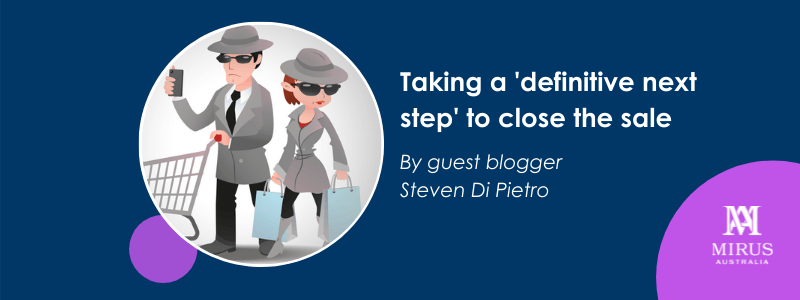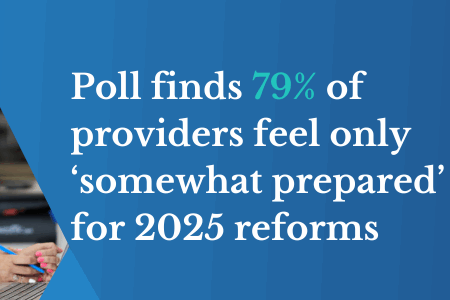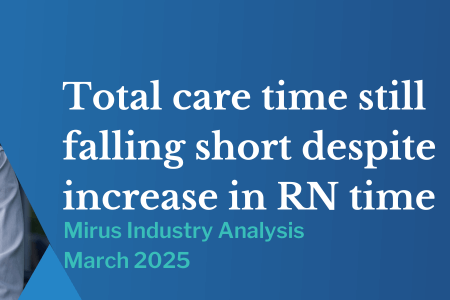Mystery shopping in aged care: only 24% of sales enquiries receive a follow-up call
July 26, 2021 | Aged Care Management

One of the toughest things in any industry is to generate sales leads. When a sales lead evaporates, we feel frustrated, yet it is here that the low hanging fruit of opportunity lies.
By guest blogger Steven Di Pietro
Here’s how it plays out:
Customer: “I’m looking into aged care for my Dad”
Staff member: “Sure, we have x, y, and z”
Customer: “Thanks, I’ll have a think about it and call you back”
Staff member: “Thanks for calling, have a lovely day, bye.”
This is the perfect storm of lost opportunity. The customer’s needs were not analysed, no contact details were captured, and there certainly wasn’t a sale close.
Each opportunity should have an expected outcome regardless of whether you’re selling burgers, cars, or aged care. “Selling” might seem like it’s not in line with the industry’s primary focus of care, but with “revenue at risk” of $100,000 per annum per operational bed, falling occupancy is dragging this industry down. Especially when the competition is not another facility but a move to staying in the home longer.
What can we learn from other industries who have been selling to survive for many years?
The one-dimensional outdated advice to Always Be Closing (ABC) never seems to connect with the long, complex sales process. How can you close the initial call to an aged care facility where someone enquires for their Dad? Can you really expect the receptionist to be ‘closing’? Is the sale even going to happen this month? Always closing won’t work. However, there should be an outcome. There needs to be a ‘definitive next step’.
Taking a ‘definitive next step’
Every customer interaction should be part of a process. That process should direct the customer to a preferred outcome.
Aged care is a complex, emotional, big-ticket sale with many economic buyers. But the definitive next steps are simple. Here are a few examples.
| Customer interaction | Definitive Next step |
| Initial exploratory phone call | Collect customer contact details |
| Detailed customer phone enquiry | Encourage a site visit |
| Failed attempt to encourage a site visit | Follow-up call to the customer |
| Initial site visit | Follow-up call to the customer or book a return visit (with a date and time) |
| Subsequent site visit | Close the sale |
The definitive next steps are not complicated, though the sales process certainly is. These simple steps also take the pressure off the staff members (especially reception), but at the same time clarify what you expect from them.
Front-line staff usually expect their role to be polite and provide information. This is true, but it’s more. The expectation is to reach a definitive next step, regardless of how inconsequential or distant that next step is from a sale. The same applies to salespeople.
What an aged care mystery shopper of 20 years can tell you
Service Integrity has been mystery shopping in Australia for 20 years. They’ve been particularly active in the aged care industry and work with Mirus Australia to help clients improve their sales and marketing processes. Here’s what the industry data shows.
Collecting customer data
In the aged care industry, customer details are only collected for 57% of calls. Those customers become ghosts who may never reappear. Their details are not collected, they don’t go into a CRM system, and certainly cannot be called back. The sale is dead before it starts.
Encouraging a site visit
Encouraging a visit is the most effective yet subtle definitive next step. However, only 69% of customers are encouraged to visit a facility during their call. This is where numbers start to compound. Some customers will reject the offer of a visit to “think about it”, but you’ll never be able to call them back because you’ve only collected contact details for 57% of the enquiries.
Follow-up call
Even if we do collect the customer details, only 24% of customers receive a follow-up call. The follow-up call doesn’t have to be a “sell”, it can simply be a check-in to see if the customer has any questions. However, the follow-up call can’t end with “I’m just thinking about it”. All it needs is a ‘definitive next step’ such as encouraging a site visit or getting permission for another follow-up call later.
Does it matter? Here’s where the maths comes in
Imagine you improve the call follow ups from 24% to 44%. This translates to making follow-up calls to an extra two customers out of every ten that call you. Your baseline was making follow-ups to 24% of customers, and you’ve merely increased it to 44%, still less than half the customers.
In the following example, a client has five sites with 50 total sales enquiries per month and sells five admissions per month (one per site). Only 25% of the 50 calls are receiving a follow-up call. So only 12 follow-up calls are made per month. For simplicity, we’ll assume every 10 follow up calls lead to a sale. Conducting an extra 10 follow-up calls per month will translate to one new sale per month valued at $265,000.
So improving follow-up calls from 25% to 45% will result in one extra sale per month.
However, a site visit is the best opportunity to make a sale. Imagine improving the incidence of suggesting a site visit from 69% to 79%. If only 10% of the people asked will buy, you will have one new sale $265,000 sale from every month by encouraging an extra 10% of customers to visit.
To be conservative, even if the success rate from these definitive next steps is one-quarter of the above calculations, rather than two additional sales per month (one from follow-ups and one from invitations to visit), there will be at least one additional sale every two months. All from following a very simple, non-invasive process.
How do you know what your numbers are?
Mirus has been working with Service Integrity Mystery Shopping in a simple 3-step process.
- Measure the core sales processes using mystery shoppers.
- Initiate change programs to define processes and change staff behaviours.
- Measure the change through further independent mystery shopping.
Grab the low hanging fruit
Whether or not you are ready to embark on the simple 3-step process of sales improvement, you can initiate simple definitive next steps of your own. Every customer interaction should end with a defined outcome.
Be clear to your staff so they know exactly what you expect, the fruits will follow.
Our Sales and Marketing diagnostic will help you find opportunities to improve occupancy, and sales revenue. It includes quantitative analysis and consultation to review internal capability such as people, systems, and processes. For more information, visit our Sales & Marketing diagnostic page or contact us.


